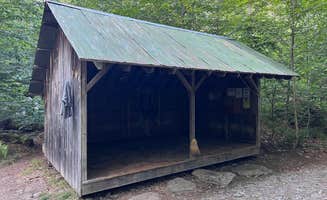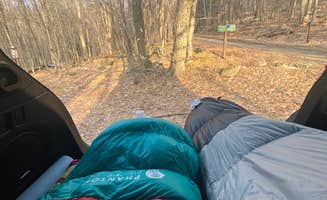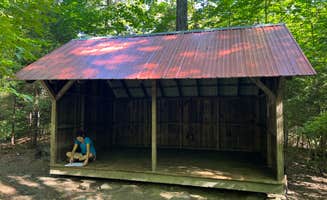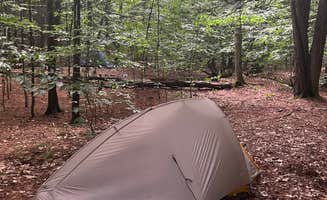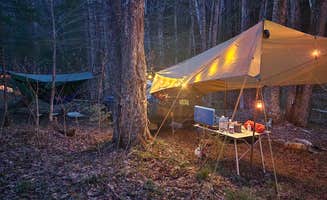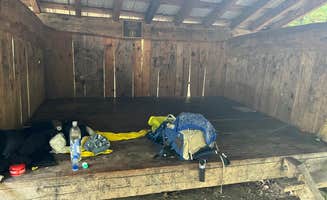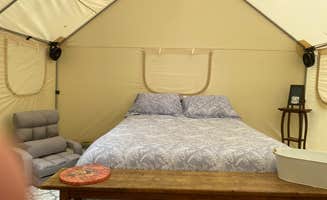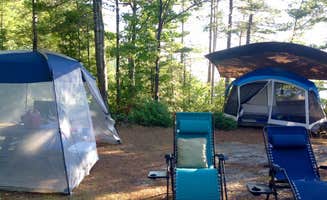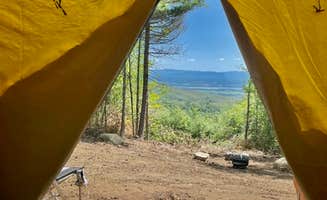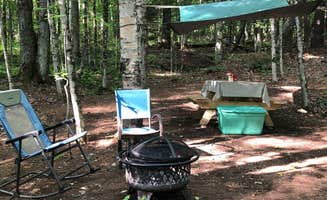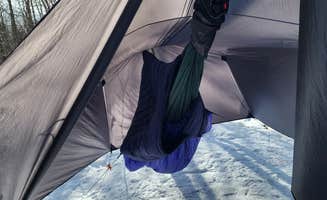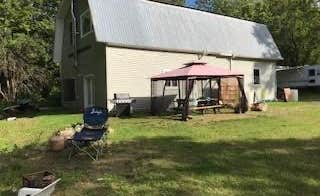Primitive camping opportunities abound in the Green Mountain National Forest near Killington, Vermont. Dispersed tent sites occupy forest service land at elevations ranging from 1,200 to 2,400 feet, with seasonal access generally limited from May through October. Winter camping requires specialized preparation as most forest service roads close after significant snowfall.
What to do
Fishing at streamside sites: The brook-fed streams near Patterson Brookside Camp offer small-scale fishing opportunities. "Mountain road lingers along the river. There's quite a few sites along the road. Be sure to camp at spots with established fire rings," notes a recent visitor.
Explore forest service roads: High-clearance vehicles provide better access to remote camping areas on Michigan Brook Road. According to one camper, "Road goes in pretty far. Some parts are muddy and very rough. Higher clearance would be advised!"
Swimming in natural pools: Several camping areas feature natural swimming spots. At Little Rock Pond, "The pond is surprisingly warm for its altitude and it's home to two Common Loons. Water is available at a creek and a spring nearby. There's a huge jumping rock on the far side of the pond."
What campers like
Riverside privacy: Campers value the seclusion offered by sites along water features. At Michigan Brook, "Drive in about a mile after the parking lot!! Can use car to get in! There's 3 camping spots. 1 before the bridge and 2 after the bridge! The one before the bridge that's right next to the river is the best one!!"
Level tent platforms: Backcountry shelters along the Appalachian Trail provide sturdy platforms for tents. At Happy Hill Backcountry Shelter, "There were a bunch of level tent camp sites around the shelter. The loft was nice since folks could decide to sleep up there while others were down below."
No cost camping: Free dispersed sites appeal to budget-conscious campers. The Last Light on Michigan Brook site earns praise: "Love this site! The very last spot on the right hand side. If you've reached the closed gate you've missed the site!"
What you should know
Fluctuating water sources: Water availability varies by season and recent rainfall at most sites. At Happy Hill Backcountry Shelter, "There wasn't any water at the source while I was staying here and it looks like a seasonal source."
Strictly primitive facilities: Most dispersed sites lack any amenities. A Patterson Brookside Camp visitor warns: "There is no electricity, no cell coverage, not outhouses in this area. Be prepared to pack out everything you bring in."
Site closures due to overuse: Forest management occasionally restricts camping access. "This area is being heavily use and some spots are being shut down from abuse," reports a Patterson Brookside Camp camper in September 2024.
Road conditions vary seasonally: Spring thaw creates challenging access. At Stony Brook Backcountry Shelter, hikers appreciate "a brand new privvy, large tenting areas, and a swimming hole and consistent water just a bit further down the trail."
Tips for camping with families
Choose sites with natural features: Streams and small pools provide entertainment for children. The Bingo campground gets positive reviews: "Couple of spots along the forest access road. Beautiful stream close by."
Shelter options for mixed-weather camping: Some sites offer protection from unexpected weather. Little Rock Pond provides "a big 3-wall cabin with room for at least 12, several tent platforms, and there's even a composting privy (#2 only)!!"
Sites with established boundaries: Families benefit from clearly defined camping areas. At Thistle Hill Backcountry Shelter, "The shelter was a one-story standard AT shelter with a fire ring and a bench for seating" with smaller, somewhat sloped tent spots nearby.
Tips from RVers
Size limitations for forest roads: Large RVs cannot access most dispersed sites. For Michigan Brook Road, campers advise: "Beware that in Spring the road gets muddy and quite rutted, I would not recommend driving down there with a car that is low to the ground."
River access for smaller vehicles: Compact RVs and vans can reach certain waterfront sites. At Michigan Brook, one camper notes: "The area is big enough to bring an RV if you can get it down the dirt road."
Seasonal road closures: Winter access requires alternative transportation methods. One camper attempted winter camping and reported, "I attempted to bring my car and was stuck overnight but was able to dig myself out the next morning."
The best tent camping near Killington, Vermont combines accessibility with primitive conditions. When seeking tent camping spots around Killington, travelers should prepare for self-sufficient backcountry experiences with variable road conditions and no guaranteed amenities.


